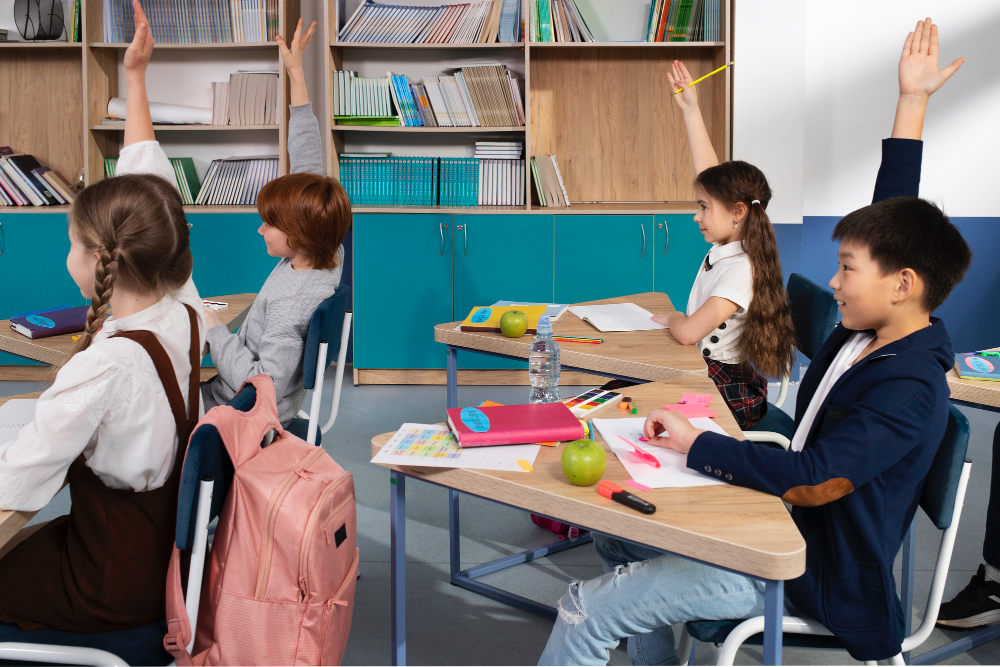The education system has always been slow to change. While technology reshapes how we work and live, most classrooms still operate on an industrial-era model: standardized tests, rigid schedules, and memorization-based learning. But artificial intelligence (AI) isn't just another tool we can tack onto this outdated system, according to the Online Learning Consortium. It's forcing us to ask a much bigger question: What should education look like in a world where AI handles routine tasks and human creativity matters most?
The AI Dilemma Facing Schools
Right now, schools are stuck in three camps when it comes to AI:
The problem? The first two approaches are missing the point. As Dr. Charlie Buehler-Hoard, an education leader overseeing online schools and AI-driven learning tools, puts it: "If we're not careful, AI will become just another tool that helps us do the wrong things more efficiently."
Our current system was built for factory-era jobs—memorize facts, follow instructions, pass standardized tests. But in an AI world, those skills are becoming irrelevant. Machines can recall information instantly. What they can't do (yet) is think critically, solve novel problems, or innovate creatively.
Yet instead of redesigning education around these human strengths, many schools are either:
"AI is not going away," warns Buehler-Hoard. "If students graduate without the skills to work alongside AI, they will enter the workforce at a severe disadvantage."
- The Ban Camp – Some block AI tools like ChatGPT, fearing cheating or over-reliance.
- The "Bolt-On" Camp – Others use AI for minor efficiencies, like grading worksheets faster.
- The Reinvention Camp – A few are rethinking education entirely, using AI to personalize learning and teach future-proof skills.
The problem? The first two approaches are missing the point. As Dr. Charlie Buehler-Hoard, an education leader overseeing online schools and AI-driven learning tools, puts it: "If we're not careful, AI will become just another tool that helps us do the wrong things more efficiently."
Our current system was built for factory-era jobs—memorize facts, follow instructions, pass standardized tests. But in an AI world, those skills are becoming irrelevant. Machines can recall information instantly. What they can't do (yet) is think critically, solve novel problems, or innovate creatively.
Yet instead of redesigning education around these human strengths, many schools are either:
- Pretending AI doesn’t exist (leaving students unprepared for the real world)
- Using AI to reinforce old methods (like generating endless worksheets faster)
"AI is not going away," warns Buehler-Hoard. "If students graduate without the skills to work alongside AI, they will enter the workforce at a severe disadvantage."
What AI-Powered Education Should Really Look Like
The future isn’t about banning AI or just using it for busywork. It’s about rebuilding education around skills that matter:
✅ Critical Thinking – Teaching students to analyze, debate, and create—not just memorize
✅ Creativity & Innovation – Nurturing ideas AI can’t replicate
✅ Adaptability – Preparing learners for jobs that don’t even exist yet
Imagine classrooms where:
This isn’t sci-fi—it’s already happening in cutting-edge schools. To make this shift, education leaders need to:
🔹 Train teachers – Educators need AI literacy to guide students responsibly
🔹 Redesign curricula – Move from fact-based testing to project-based, AI-enhanced learning
🔹 Close the AI gap – Ensure all students, regardless of income, can access these tools
🔹 Teach ethics – Help students navigate AI’s risks (bias, misinformation, privacy)
The big takeaway? "AI isn’t going to replace teachers… but teachers who use AI will replace those who don’t," says Buehler-Hoard. The same goes for students. The time for half-measures is over. AI isn't just changing education—it's revealing how outdated our current system really is. Schools that lean into this transformation now will define the future of learning, while those that resist risk leaving a generation of students behind. The path forward is clear: we must stop fearing AI and start harnessing it to build an education system worthy of 21st century learners.
✅ Critical Thinking – Teaching students to analyze, debate, and create—not just memorize
✅ Creativity & Innovation – Nurturing ideas AI can’t replicate
✅ Adaptability – Preparing learners for jobs that don’t even exist yet
Imagine classrooms where:
- AI tutors give instant, personalized feedback while teachers mentor
- Students use AI to explore passions instead of sitting through one-size-fits-all lessons
- Teachers spend less time grading and more time sparking curiosity
This isn’t sci-fi—it’s already happening in cutting-edge schools. To make this shift, education leaders need to:
🔹 Train teachers – Educators need AI literacy to guide students responsibly
🔹 Redesign curricula – Move from fact-based testing to project-based, AI-enhanced learning
🔹 Close the AI gap – Ensure all students, regardless of income, can access these tools
🔹 Teach ethics – Help students navigate AI’s risks (bias, misinformation, privacy)
The big takeaway? "AI isn’t going to replace teachers… but teachers who use AI will replace those who don’t," says Buehler-Hoard. The same goes for students. The time for half-measures is over. AI isn't just changing education—it's revealing how outdated our current system really is. Schools that lean into this transformation now will define the future of learning, while those that resist risk leaving a generation of students behind. The path forward is clear: we must stop fearing AI and start harnessing it to build an education system worthy of 21st century learners.
